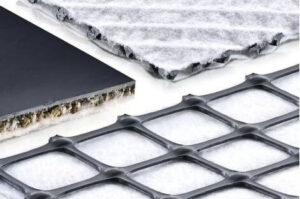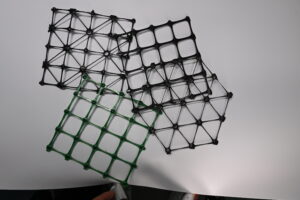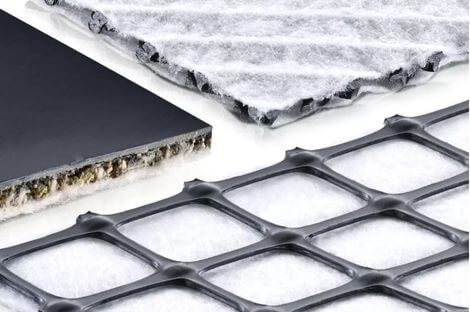Geogrids are widely used in civil engineering, water conservancy engineering, Environmental engineering and other fields. The following are some common application scenarios:
Road and railway engineering: geogrid can be used for reinforcement and protection of roads and railways, such as soil base reinforcement, subgrade reinforcement and soil Erosion control control. It can provide high load transfer capacity, reduce roadbed settlement and deformation, and extend the service life of roads and railways.
Embankment and flood control engineering: Geogrids are used in embankment and flood control engineering to enhance soil stability and prevent soil erosion. It is used for the reinforcement of river banks and lake embankments, which can resist the impact of water flow and waves, prevent dam damage and soil erosion.

Geotechnical engineering: Geogrids are used for soil reinforcement and anti slip stability in geotechnical engineering. It can be applied to slope reinforcement and the construction of retaining walls, providing high tensile strength and shear resistance, and preventing soil landslides and collapses.
Environmental protection and water resource management: Geogrid is used for soil conservation, river bank restoration and wetland restoration in Environmental engineering. It can prevent soil erosion, reduce sediment transport, and protect water quality and ecological environment.
Mines and waste landfills: Geogrids can be used for soil reinforcement and anti-seepage control in mines and waste landfills. It can increase drainage performance, reduce landslide risk, and prevent pollutants from seeping into groundwater.

Construction process of geogrid
Project preparation: Before starting construction, project preparation work needs to be carried out. This includes determining the type, size, and quantity of geogrids required for the project, and conducting necessary measurements and markings.
Soil preparation: Before construction, it is necessary to prepare the soil. This includes removing surface debris, evenly leveling the soil, and ensuring that the construction area meets the conditions suitable for installing geogrids.
Geogrid laying: According to the design requirements, lay the geogrid on the construction area. During the laying process, corresponding installation methods and precautions need to be followed. Generally, geogrids need to overlap correctly at joints to ensure Tight junction.
Fixed consolidation: After completing the laying of the geogrid, it is necessary to perform fixed consolidation to ensure its stability. This can be fixed by using ground nails, hooks, or other fixtures. The purpose of fixation is to prevent the movement or deformation of the geogrid during use.
Filling or covering layer: Once the geogrid is fixed, the construction of filling or covering layer can be carried out. The filling should be carried out in accordance with the design requirements to ensure its adhesion and stability with the geogrid.
Subsequent processing and inspection: After completing the filling or covering layer, subsequent processing and inspection work is required. This includes compacting the fill, conducting necessary acceptance and inspection to ensure the quality and safety of the project.


